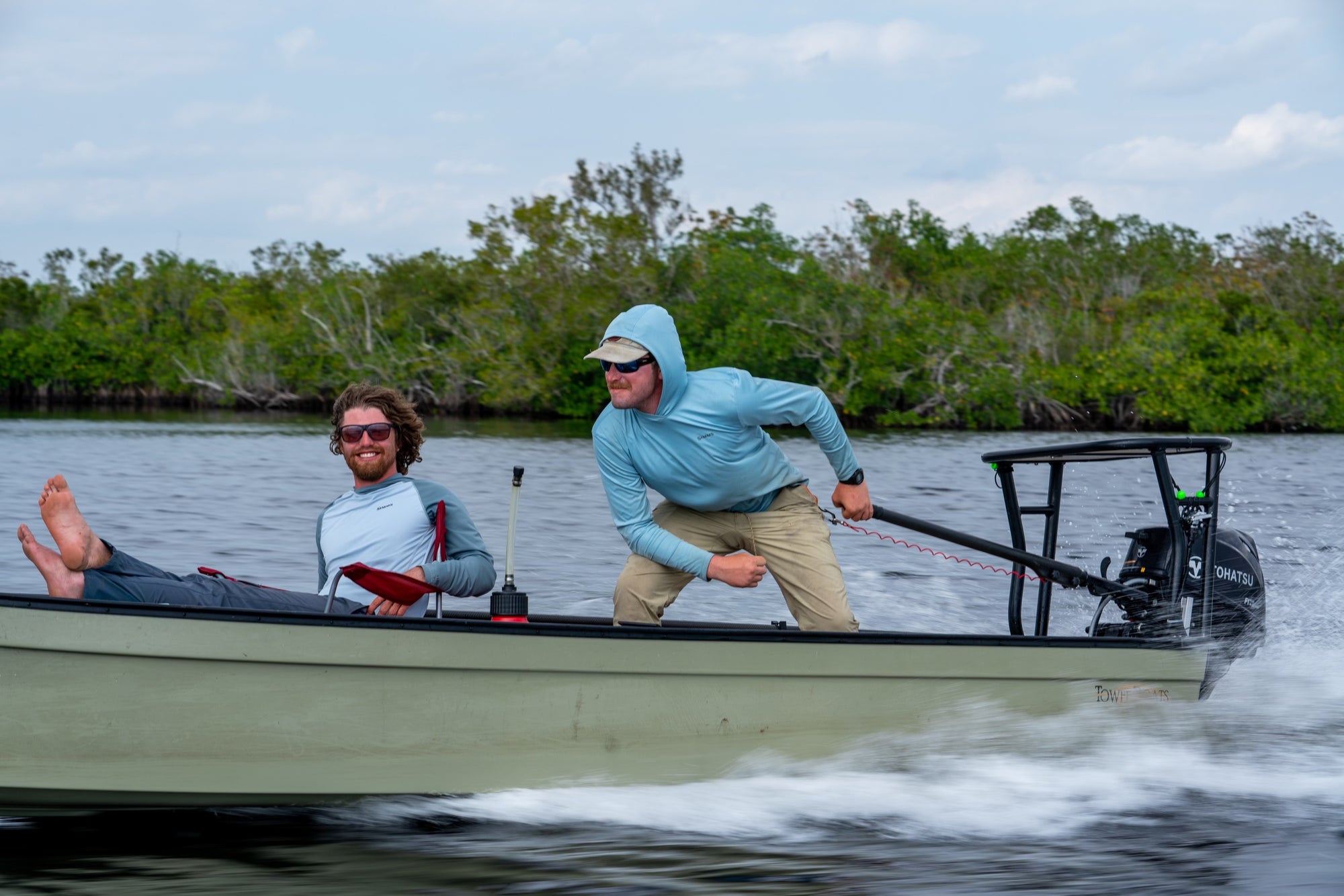Article Written by Gavin Griffin. Article Read Time: 4 Minutes
When I first received an invitation to explore the Everglades not long ago, the prospect was both thrilling and intimidating. While the allure of fishing is always rad, ensuring safety in the remote backcountry is important. Enjoying oneself is key, but returning home safely is non-negotiable, making preparedness an essential protocol.

In the unpredictable wilderness of the Everglades, communication is a lifeline. Our go-to emergency plan revolves around the Garmin inReach 2.0, upgraded to include the invaluable “unlimited” feature during our trip dates. Although the annual subscription may seem steep at $20 per month, paid annually, with an additional $50 for the month or months of use, the investment offers peace of mind and a reliable emergency lifeline.
While the National Coast Guard mandates the presence of an FHM radio on boats, its “sight-to-sight” signal is insufficient for communication in the sprawling Everglades. It will not reach a coast guard tower. Thus, relying solely on this device for rescue is impractical.

Equipping oneself with the right tools is paramount for a safe expedition. In addition to a sturdy boat, a reliable GPS unit is a must have. We use the SIMRAD (model: Go7 and Go9) with a Florida Marine Tracking (FTM) chip to prove satellite image quality, providing important navigation support and running lines following proper channels. We have battery packs to cover cellphone charges with the app ONX and area maps downloaded for backup.
A well-stocked toolbox containing essentials like extra electrical connections, fuses, wire, and a spare propeller is indispensable for averting potential breakdowns and ensuring a smooth journey. Having a can of fuel can do wonders in peace of mind to make sure you make it back to the dock, as well.

Adhering to Coast Guard regulations is essential, which requires throwable, flares, and a sound making device, like a whistle. It is equally crucial to pack essentials like extra water, a sound medical kit with a tourniquet, a compass, and a map.
Safety extends beyond equipment to responsible boating practices. Avoiding reckless maneuvers like speeding around blind bends and running through no-wake channels is common sense. When navigating unfamiliar waters, proceed cautiously and designate a bow-watcher to scan for obstacles ahead. There are a few hidden logs around that place that can catch a prop and send you flying forward, which is why a quality and secure engine cutoff leash should always be attached to you while running your boat.

I always encourage having someone who is aware of your dates or time on the water. Tell that person where your general areas of exploration are, when you’re planning to be off the water. That way, someone knows when you should be back approximately so if you’re not back, they can sound the proper alarm.

Ultimately, safety in the Everglades and every backcountry body of water is a combination of preparedness, communication, and responsible navigation. By prioritizing these aspects, anglers can enjoy the thrill of exploration while minimizing risks and ensuring a safe return home.


